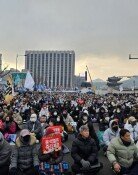Rival parties in tug of war to set ‘rice target price’
Rival parties in tug of war to set ‘rice target price’
Posted February. 02, 2019 07:30,
Updated February. 02, 2019 07:30
"The rice price in Korea is determined at Yeouido, not in the market." This remark means that retail prices marked on sacks of rice at discount stores and neighborhood grocery shops are not amounts set naturally according to rice demand and rice production by farmers, but are numbers that are significantly affected by agreement on price at the National Assembly.
The rice price agreed upon by the political sector refers to "target price," which serves as the barometer for variable direct farming subsidies that the government pays rice farmers to supplement their income. If this target price is set high, the variable direct farming subsidy increases to give more benefit to rice farmers, but adds costs to the government budget. In contrast, if the target price is low, the variable direct farming subsidy decreases to ease burden on the government budget, but gives less benefit to farmers.
Due to this mechanism, the ruling party tries to fix the target price at a certain level, while opposition parties seek to raise the target price, causing the rival parties to engage in a tug of war. As more farmers choose to actually plant rice in a race to receive more direct farming subsidies in tandem with the target price, rice gets oversupplied. Since the price could plunge were it not for an intervention, the political circle chooses to intervene. This creates a vicious cycle of distorted rice prices.
The provincial and metropolitan governments across the nation have generally been paying "variable direct farming subsidies" to supplement farmers’ income through the National Agricultural Cooperative Federation ahead of Lunar New Year’s Day. However, as the rival parties have failed to reach consensus on the target price this year, which serves as the barometer for the direct farming subsidy, it is unknown whether the subsidy will be paid or not. The National Assembly will set a new target price within this month. But the ruling and opposition parties have shown a significant gap in their suggested target prices. If this situation continues, 253.3 billion won (226 million U.S. dollars), which is earmarked for subsidy payment for rice production in 2018, could end up not being spent.
The National Assembly is being widely affected by voter sentiment ahead of next year’s general elections. As the government has a plan to reshuffle the direct rice farming subsidy system this year, controversy will most likely continue to linger.
Hye-Ryung Choi herstory@donga.com
Headline News
- Joint investigation headquarters asks Yoon to appear at the investigation office
- KDIC colonel: Cable ties and hoods to control NEC staff were prepared
- Results of real estate development diverged by accessibility to Gangnam
- New budget proposal reflecting Trump’s demand rejected
- Son Heung-min scores winning corner kick







